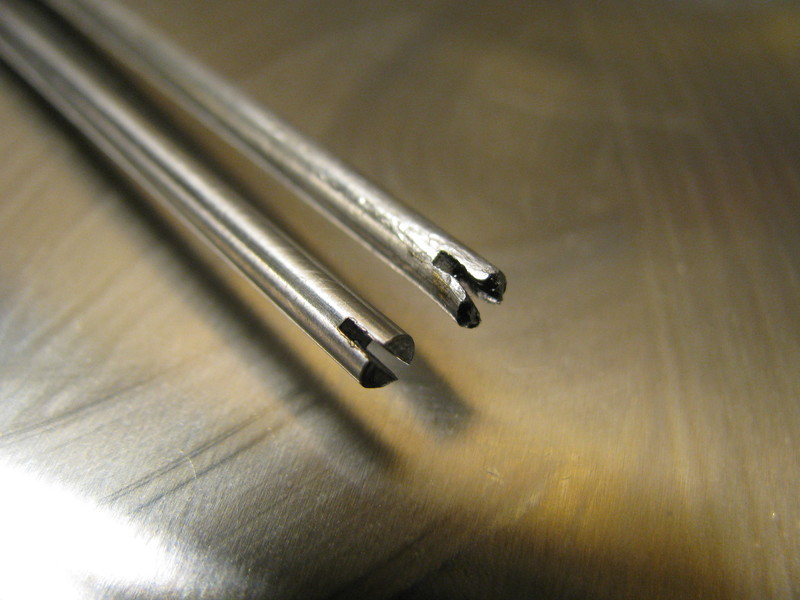Fabrication of a Post Bushing
This 1933 Conn Transitional tenor had a lower stack assembly that was so worn out and loose, the concentric play and the lateral play was egregious. In this article you are reading, we are concerned specifically with the concentric play.
No amount of normal post-swedging would have satisfactorily remedied the poor fit or the subsequent poor action. No amount of detail in the pad work would have remedied the poor action because when the pad closes on it's tone hole, the fulcrum will still rock in its loose-as-can-be orientation, creating a leak in the back of the pad. So, even a meticulously installed pad would suffer from the poor action inside both the hinge tube and the post.
So, first a new rod needed to be made to fit the hinge tubes, but the top most post was worn out still more than all the others. Why was that?
Look at the the third photo, see the old rod? See its splayed head? That is how the slop inside the post has been "corrected" for years. Splay the head and the rod will fit tighter inside the post...until it doesn't because the inside diameter of the post becomes too large for even the splayed head, and now it rocks around in there like crazy.
The solution is revealed in these photos: you make a post bushing of just the right size. In this case, the I.D. of the
This 1933 Conn Transitional tenor had a lower stack assembly that was so worn out and loose, the concentric play and the lateral play was egregious. In this article you are reading, we are concerned specifically with the concentric play.
No amount of normal post-swedging would have satisfactorily remedied the poor fit or the subsequent poor action. No amount of detail in the pad work would have remedied the poor action because when the pad closes on it's tone hole, the fulcrum will still rock in its loose-as-can-be orientation, creating a leak in the back of the pad. So, even a meticulously installed pad would suffer from the poor action inside both the hinge tube and the post.
So, first a new rod needed to be made to fit the hinge tubes, but the top most post was worn out still more than all the others. Why was that?
Look at the the third photo, see the old rod? See its splayed head? That is how the slop inside the post has been "corrected" for years. Splay the head and the rod will fit tighter inside the post...until it doesn't because the inside diameter of the post becomes too large for even the splayed head, and now it rocks around in there like crazy.
The solution is revealed in these photos: you make a post bushing of just the right size. In this case, the I.D. of the
bushing is .1085" and the O.D of the new rod is .108" So that gives a clearance of .0005" that's half a thousandth of an inch. Not good if you're working for NASA, but very good if you restore saxophones.





